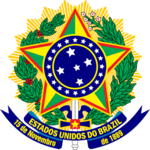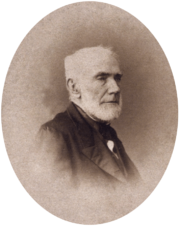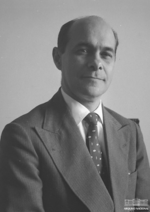Prime Minister of Brazil facts for kids
Brazil has had a special political job called Prime Minister, also known officially as President of the Council of Ministers. This role existed during two different times in history. The first time was from 1847 to 1889, when Brazil was an Empire. The second time was for a short period from 1961 to 1963, during the Fourth Republic.
The idea of a prime minister was first started in 1847 by Emperor Pedro II. It lasted until the monarchy ended in 1889. The job came back briefly from 1961 to 1963 under President João Goulart. This happened because his opponents made a change to the country's rules. But then, people voted in a special election to get rid of the job again.
Let's learn more about the Prime Minister's role in each of these periods.
Contents
Prime Ministers of the Brazilian Empire (1847–1889)
Quick facts for kids President of the Council of Ministers of the Empire of Brazil |
|
|---|---|

|
|
| Residence | Rio de Janeiro, Empire of Brazil |
| Seat | Imperial Palace |
| Appointer | Emperor of Brazil (1847–1889) |
| Term length | No term limit |
| Formation | 20 July 1847 |
| First holder | The 2nd Viscount of Caravelas |
| Final holder | The Viscount of Ouro Preto |
| Abolished | 15 November 1889 |
The job of Prime Minister in Brazil began in 1847. Emperor Pedro II created it. Its official name was "President of the Council of Ministers." But people often called it "President of the Cabinet" or "President of the Council."
Brazil's rules in 1824 didn't say the Emperor had to pick a prime minister. The Emperor had all the power himself. He could choose and fire his ministers freely. But Emperor Pedro II decided to pick one minister to lead the government. He wanted a system where the prime minister needed support from the Chamber of Deputies. This was the main group of lawmakers in Brazil's parliament.
So, even though the rules didn't demand it, the Emperor started to act like a parliamentary leader. He would only pick a prime minister who had enough support from the lawmakers.
How the Emperor and Prime Minister Worked Together
The Emperor was not just a symbol. He had real power. The prime minister needed the support of both the lawmakers and the Emperor. The Emperor watched the government closely. Sometimes, he would even close the Chamber of Deputies and call for new elections. He could also fire the prime minister if he didn't like how things were going.
This often led to many prime ministers serving for only short times. The Emperor would sometimes fire a prime minister and pick someone else from the same political group. The Emperor also had the power to sign or reject new laws. He didn't always follow his ministers' advice. This was seen as normal because the rules didn't force him to share his power.
So, the system Pedro II created was not a typical parliamentary system. In a typical system, the leader of the country (like a king or queen) has less power. Brazil's system was more like a "semi-parliamentary government." This is similar to some countries today where the leader has real power, but there's also a prime minister who needs the support of the lawmakers.
Some Brazilian experts called this system "reverse parliamentarism." They thought the Emperor had more power than the lawmakers. They believed the prime minister's job depended more on the Emperor's trust than on the lawmakers' support.
Challenges for Prime Ministers
It was also hard for prime ministers because lawmakers didn't always stick with their political groups. They often voted for their own interests. This made it even harder for prime ministers to stay in power. It was common for a prime minister to be replaced by someone else from the same group. This could happen even during the same group of lawmakers.
During Pedro II's rule (1840-1889), there were 16 elections for lawmakers. This means lawmakers served for about three years on average. But the prime minister job was created in 1847. From then until 1889, there were 32 different prime ministers. This means each prime minister served for only about one year and four months on average.
However, some politicians served multiple times. Duke of Caxias, Marquis of Olinda, and Zacarias de Góis e Vasconcelos all became prime minister more than once. Caxias and Zacarias Góis e Vasconcellos each served three times. The Marquis of Olinda served a record four times.
The prime minister needed support from both the lawmakers and the Emperor. Sometimes, these two sources of power could clash. A famous historian, Joaquim Nabuco, said in 1899:
The President of the Council in Brazil was no Russian Chancellor, Sovereign's creature, nor a British Prime Minister, made only by the trust of the Commons: the delegation of the Crown was to him as necessary and important as the delegation of the Chamber, and, to exert with safety his functions, he had to dominate the caprice, the oscillations and ambitions of the Parliament, as well as to preserve always unalterable the favor, the good will of the Emperor."
– Joaquim Nabuco, 1899
The shortest time a prime minister served was just a few days in May 1862. This was Zacarias Góis e Vasconcellos's first time in office. The longest continuous time was when the Viscount of Rio Branco was prime minister. He served from March 1871 to June 1875. But if you add up all the times the Marquis of Olinda was prime minister, he served the longest in total.
The job of prime minister ended when the monarchy was removed in 1889.
How the Republic Began
The end of the Empire and the start of the Republic happened on November 15, 1889. This began as a military takeover. The goal was to remove the prime minister at the time, Viscount of Ouro Preto. He was from the Liberal Party and had the support of the lawmakers.
Marshal Deodoro da Fonseca, a key military leader, supported the Conservative Party. He joined the plan to overthrow the Liberal Prime Minister. At first, Deodoro only wanted to change the government leaders. He didn't want to remove Emperor Pedro II. But some of his partners were republicans. Later that day, the military takeover led to the end of the monarchy.
The decision to create a republic was made when Deodoro got false news. His republican partner, Benjamin Constant, told him the Emperor planned to appoint Gaspar da Silveira Martins as the next prime minister. Martins was Deodoro's enemy. This news made Deodoro decide to support ending the monarchy.
After the republic was declared, Brazil switched to a presidential system. In this system, the president is the main leader, not a prime minister.
Prime Ministers of the United States of Brazil (1961–1963)
| President of the Council of Ministers of the United States of Brazil | |
|---|---|

Coat of arms of the United States of Brazil (1889–1968)
|
|
|
Tancredo Neves, the longest serving officeholder in the Republic
|
|
| Seat | Brasília, Brazil |
| Appointer | The President of the Republic
with Chamber of Deputies advice and consent
|
| Precursor | President of the Council of Ministers (Imperial Era) |
| Formation | 2 September 1961 |
| First holder | Tancredo Neves |
| Final holder | Hermes Lima |
| Abolished | 23 January 1963 |
| Succession | A Minister of State to be designated by the incumbent |
After the monarchy ended and Brazil became a republic, the country used a presidential system. This means the president was the main leader. But for a short time, from September 7, 1961, to January 23, 1963, Brazil brought back the prime minister system. This happened during the time of President João Goulart.
The prime minister system was brought back in 1961 to solve a big political problem. It was a way for different political groups to agree. But it didn't last long. In January 1963, people voted in a special election (a plebiscite) to get rid of the system again.
The official name for the head of government during this time was "Presidente do Conselho de Ministros." This was the same official name used for the prime ministers during the Empire. But people often called them "Premier" or "Prime Minister." Sometimes, they just said "President of the Council."
See also
- List of Brazilian monarchs
- List of governors-general of Brazil
- List of presidents of Brazil
- President of Brazil



